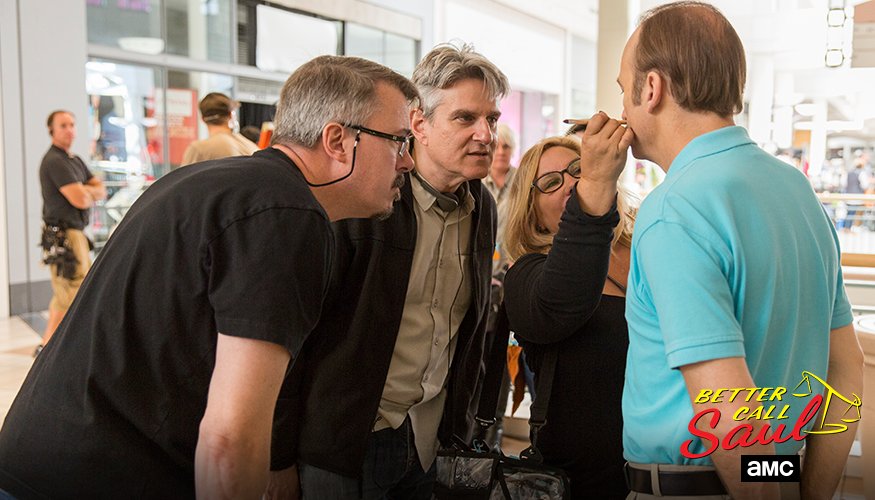The Success of “Better Call Saul” Lies in Collaboration
Co-creators Vince Gilligan (left) and Peter Gould (center) work with Bob Odenkirk. Vince Gilligan created the hit show “Breaking Bad” and developed the prequel with Gould.
For superfans of “Better Call Saul,” the Insider Podcast supplies enough technical details and backstage anecdotes to stave off the grueling wait between episodes (which air weekly on AMC). The podcast also illuminates the teamwork behind “Better Call Saul.” Despite different guests every episode, the podcast always feels like a friend group chatting about their favorite show. That’s because the “Better Call Saul” team understands that to create art as beautiful and ambitious as their show requires the expertise of hundreds—from actors to writers to set designers.
The podcast features people from a variety of disciplines explaining their role in shaping the show. And though their conversations are recorded with fans in mind, the guests and podcast staples often inquire about their peer’s expertise with genuine interest. Take this exchange from Episode 509 where the Director of Photography Marshall Adams asks actor Rhea Seehorn about her acting.
“That’s what I always wonder,” Adams said, “how you guys keep the same energy over two days of doing that over and over again.”
“Of course emotional scenes can get exhausting,” Seehorn said. “Not so much mentally…It’s your body. When you make yourself feel a lump in your throat because of what you’ve decided to play in this scene or make yourself be as still as you can…you’re tensing your actual body. So at the end of the day, I was sore because my body has no idea we’re playing pretend.”
Other exchanges that highlight the crew’s belief in the importance of the individual when creating “Better Call Saul” appear in the supportive messages tweeted throughout the airing of season five, where crewmembers regularly interacted with fans online and shouted out the contributions of those who work behind the scenes.
On the podcast, Thomas Schnauz expanded on his thankful message: “There was a good game plan in place that my AD, Rich Sickler…He had basically drawn up a game plan of where we go, what order to do things. We just sorta had all the dominos set up and knocked them down one at a time and got out of there by lunch to move on to the next scene.”
“That’s what makes this environment so special,” Adams said. “You guys enable everybody to do their best work and bring something to the table and offer it up that they wouldn’t necessarily do someplace else or feel the freedom to do. And that, I think, is what makes this show as special in a lot of ways as it can. Because everybody in every department is bringing their A-game all the time and trying new things and willing to fail.”
In addition to the crew spending time thanking their peers, they also provide tips about the nuts and bolts behind filming a television show. Outside of the podcast, writers post pictures of writer’s boards in progress and directors post pictures of sets being designed and shots being aligned. Fans respond to these posts with questions as monotonous as when the next season will be released to specifics like how long it takes to write an episode. Often, the crew members respond to their questions candidly.
In a podcast, Gould hinted at the reason for the crew’s dedication to answering fans’ questions: “There are a couple of podcasts this season which I wish I could send back to myself when I was in film school because I learned so much today.”


